
¡Hola, amigo ilustrador y creador de comics/manga!
Hoy quiero hablarte de algo que se ha convertido en mi forma principal de ilustrar: la ilustración digital. Si alguna vez has sentido esa chispa creativa y te has sentado frente a tu pantalla, sabrás que tener las herramientas adecuadas puede hacer toda la diferencia. Así que, mientras tomamos un café, déjame contarte sobre mis herramientas favoritas para crear arte digital.
1. Manga Studio EX
Empecemos con uno de mis programas favoritos: Manga Studio EX. Este software es como un sueño hecho realidad para cualquier artista de cómics o manga. La interfaz es intuitiva y está diseñada específicamente para dibujantes. Lo que más me gusta es su capacidad para manejar capas y su amplia gama de pinceles personalizables. Puedes crear desde bocetos hasta páginas completas de cómic sin perder calidad. Además, tiene herramientas específicas para el entintado que hacen que el proceso sea mucho más fluido. Manga Studio EX es el antecesor a Clip Studio. Sigo prefiriéndolo para todo lo relacionado a la elaboración de manga.
2. Easy Paint Tool Sai
Si buscas algo ligero y fácil de usar, Easy Paint Tool Sai es una excelente opción. Este programa se ha ganado un lugar especial en mi corazón por su simplicidad y eficacia. La sensación al dibujar con sus pinceles es increíblemente natural, casi como si estuvieras usando lápices reales sobre papel. Me encanta cómo puedes ajustar la presión del lápiz para obtener diferentes efectos; esto es especialmente útil cuando estoy trabajando en ilustraciones más suaves o estilizadas.
3. Clip Studio Pro
No puedo dejar de mencionar Clip Studio Pro, que se ha convertido en una herramienta esencial en mi flujo de trabajo. Este programa combina lo mejor de ambos mundos: ilustración y animación. Tiene una variedad impresionante de pinceles y texturas, lo que te permite experimentar con diferentes estilos artísticos. Además, su función de perspectiva es muy útil cuando intento crear fondos complejos. Realmente tiene funciones que facilitan el trabajo al momento de crear ilustraciones que retan las habilidades.
Mis Herramientas Preferidas
Ahora que hemos hablado sobre los programas, hablemos de las herramientas específicas que uso dentro de ellos:
- Lasso Fill
Una herramienta que no puede faltar en mi arsenal es el Lasso Fill. Esta maravilla me ayuda a rellenar áreas que quedan sin cubrir al usar pinceles con anti aliasing, como los lápices y brochas de acuarela. Es perfecta para esos momentos en los que quieres asegurarte de que cada rincón esté perfectamente coloreado sin tener que hacer un trabajo extra. Simplemente seleccionas el área y ¡bam!, queda todo listo. Es una verdadera ayuda, especialmente cuando estoy trabajando en ilustraciones más complejas y con poco tiempo para realizarlas.
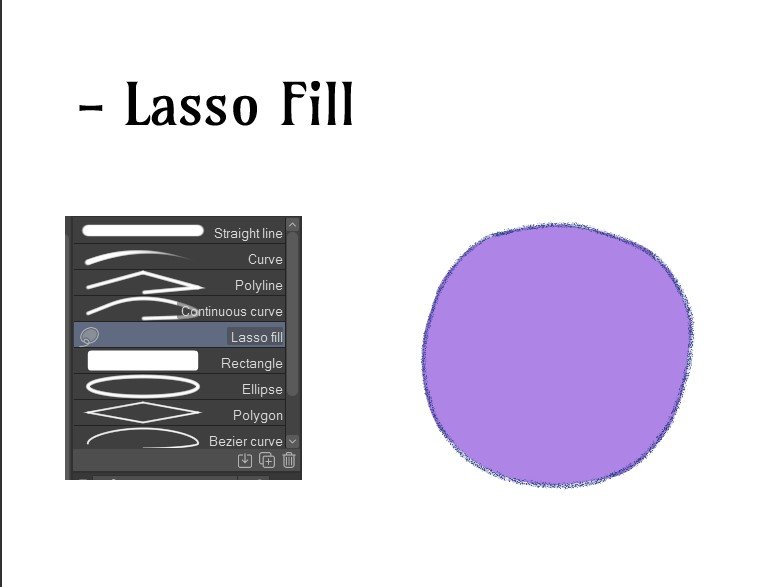
- G-Pen
Si hablamos de lineart, mi herramienta favorita es el G-Pen. Este pincel es ideal para crear líneas limpias y definidas, especialmente cuando estoy trabajando en estilo manga. La forma en que responde a la presión del lápiz es simplemente perfecta; puedes lograr líneas finas o gruesas con facilidad. Me encanta cómo da vida a mis personajes y les aporta ese toquedinámico que tanto busco. Este pincel es el mejor para dar el toque a las ilustraciones al estilo shounen.
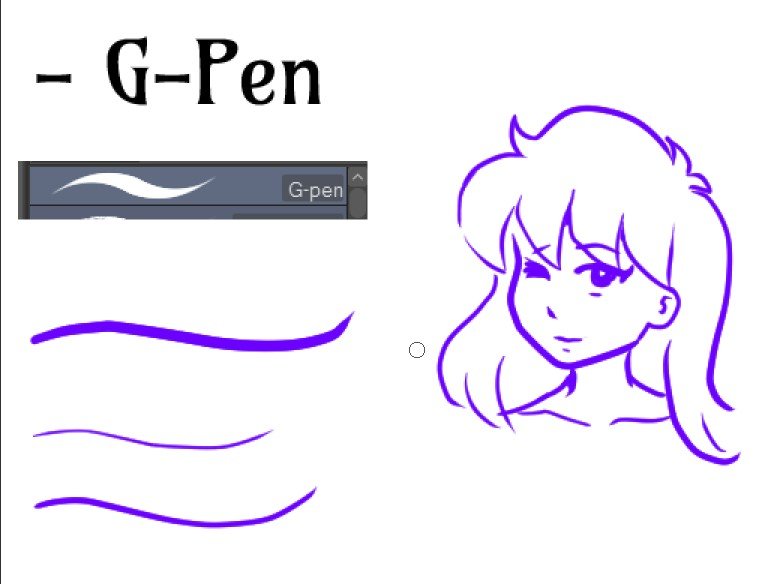
- Pencil
Para mis ilustraciones con un estilo retro de anime, no hay nada mejor que el Pencil. Este pincel tiene una textura única que recuerda a los dibujos hechos a mano, lo cual es justo lo que necesito para capturar esa esencia nostálgica. Cuando utilizo este pincel, siento que estoy regresando a mis raíces artísticas, y eso siempre me inspira. Definitivamente, se ha vuelto una de mis preferidas.
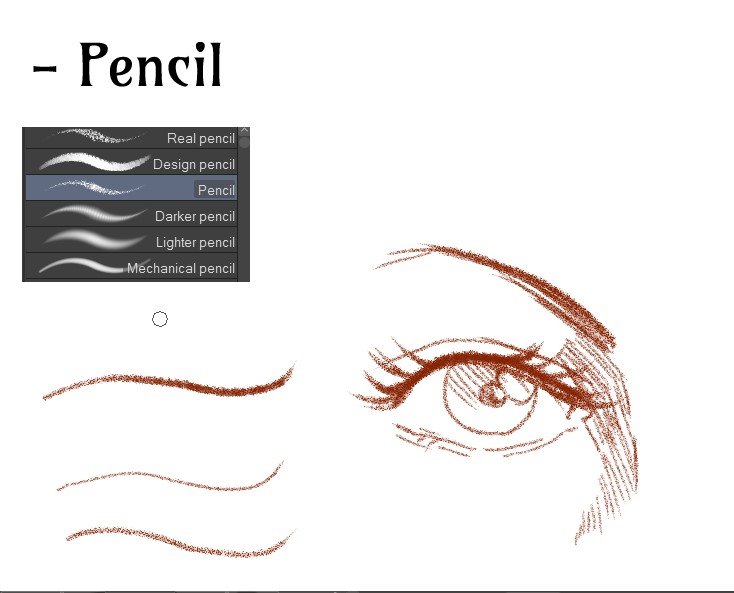
- コミスタっぽい丸ペン (Comista Ppoi Maru Pen)
Esta herramienta tiene un nombre curioso, pero su función es aún más interesante. Se traduce como "pincel redondo al estilo Comista". Lo uso para lineart que requiere un toque más delicado y sutil. Es perfecto para esos detalles finos en mis ilustraciones donde quiero mantener una estética suave y elegante. También es muy útil al momento de hacer ilustraciones que implican sentimientos como amor o ternura por la delicadez del trazo.
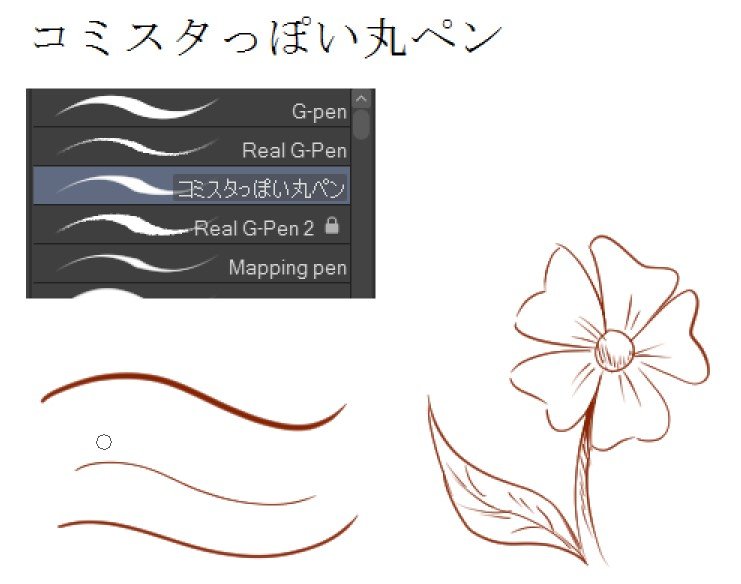
- Dense Watercolor Brush
Cuando se trata de fondos, el Dense Watercolor Brush es mi mejor amigo. Este pincel me permite crear hermosos fondos al estilo anime retro con una textura rica y vibrante. Me encanta cómo puedo mezclar colores y crear efectos de acuarela sin tener que lidiar con el desorden del medio tradicional. Es como tener lo mejor de ambos mundos: la libertad de la acuarela con la precisión del digital. Con algo de práctica, se logra hacer difuminados con la misma brocha sin necesidad de utilizar otras herramientas como Blur o Blend.
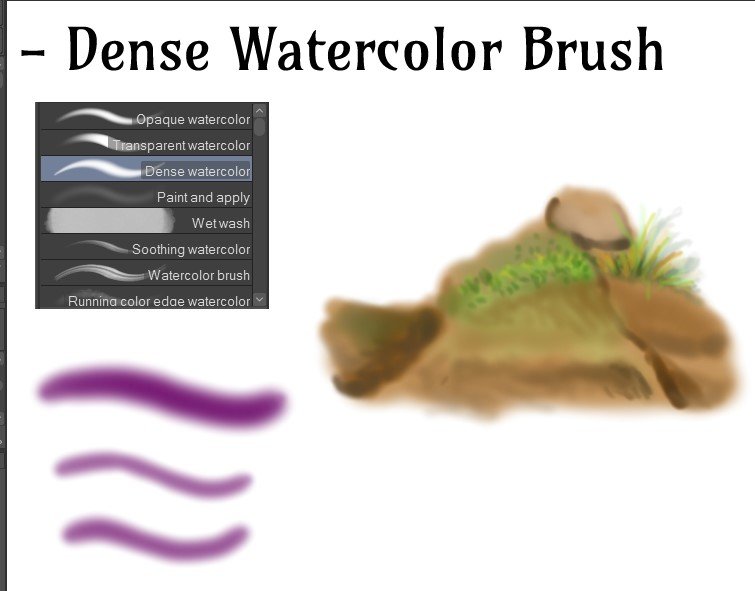
- 水彩/Watercolor Pencil/Watercolor Pencil (Suisai)
Por último, pero no menos importante, está el Watercolor Pencil (水彩). Este pincel es ideal para ilustraciones que buscan un toque de arte tradicional. La forma en que simula la textura de un lápiz acuarelable es simplemente mágica. Me gusta usarlo para agregar detalles finales o para dar un acabado suave a mis obras. Es perfecto para esos momentos en los que quiero que mi arte tenga un aire más orgánico y menos digital.
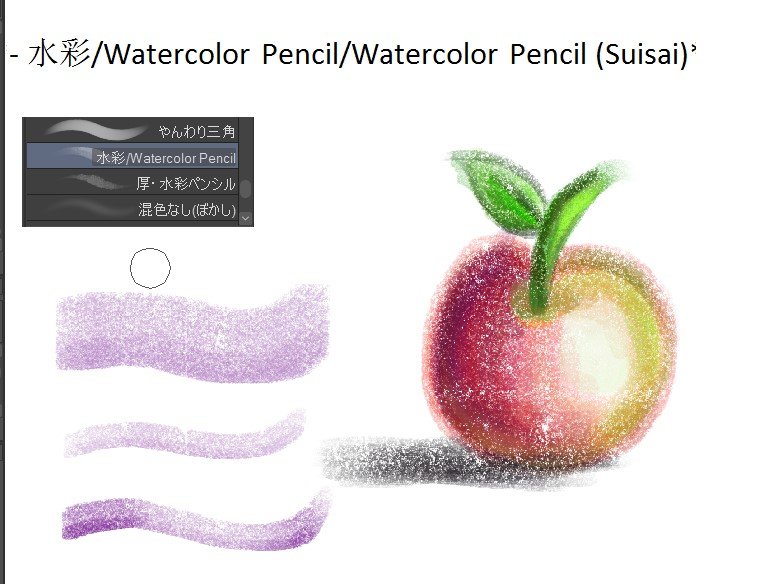
Bien amigo, estas son algunas de mis herramientas favoritas para la ilustración digital. Cada una tiene su propio lugar en mi flujo de trabajo y me ayuda a expresar mi creatividad de maneras únicas. Ya sea que estés comenzando en el mundo del arte digital o seas un veterano buscando nuevas herramientas, espero que encuentres algo útil en esta lista.
Recuerda, lo más importante es experimentar y encontrar las herramientas que mejor se adapten a tu estilo personal. Al final del día, lo que realmente importa es disfrutar del proceso creativo y dejar volar tu imaginación. Así que toma tu café, abre tu programa favorito y ¡a dibujar! No tengas miedo de probar las diferentes funciones de cada brocha o herramienta. Te sorprenderá las cosas que puedes lograr con sólo algunos ajustes.
Hoy te comparto una ilustración donde Pete, personaje del anime Daiku Maryu Gaiking, entrena a Ylia en el uso del lanzador. ¡Y sí! Usé la mayoría de las herramientas que te he compartido en este post en su elaboración.
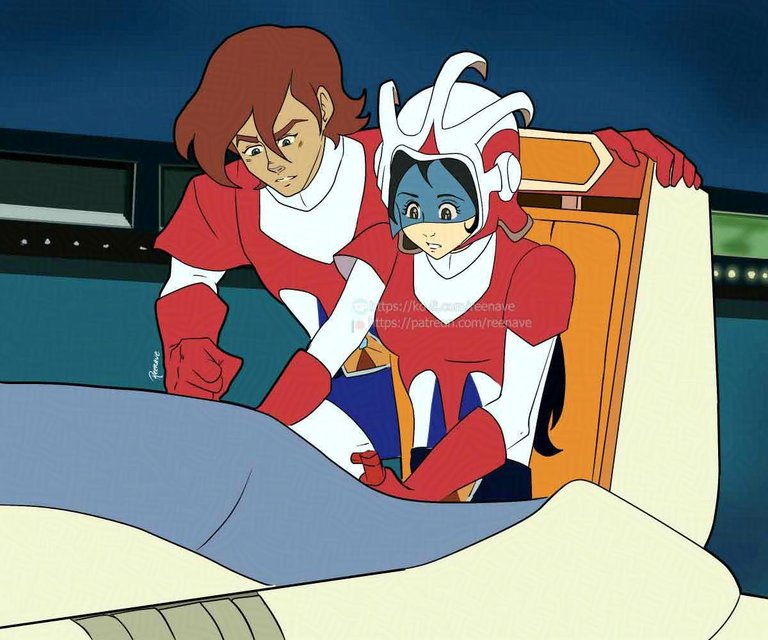
Espero que este artículo te haya inspirado a explorar nuevas herramientas y técnicas. Si tienes dudas o necesitas información adicional, no dudes en hacérmelo saber. Deja tus dudas en los comentarios. Podrían convertirse en la base para nuevos artículos que puedan ayudar a otros ilustradores y o creadores de manga/ comics.
¡Hasta el siguiente artículo!
Mis blogs: Noise Steemit Hive Publish0x Medium
Mis redes sociales: Instagram Facebook Twitter YouTube TikTok
Mis tiendas: Redbubble
Comisiones Abiertas: Fiverr
Suscríbete, dale like y comparte si estás disfrutando la historia para que recibas notificación al haber actualización!

Hello, illustrator friend and comic/manga creator!
Today I want to talk to you about something that has become my main way of illustrating: digital illustration. If you've ever felt that creative spark and sat down in front of your screen, you know that having the right tools can make all the difference. So, while we sip on coffee, let me tell you about my favorite tools for creating digital art.
1. Manga Studio EX
Let's start with one of my favorite programs: Manga Studio EX. This software is like a dream come true for any comic or manga artist. The interface is intuitive and specifically designed for drawers. What I love most is its ability to handle layers and its wide range of customizable brushes. You can create everything from sketches to complete comic pages without losing quality. Plus, it has specific tools for inking that make the process much smoother. Manga Studio EX is the predecessor to Clip Studio. I still prefer it for everything related to manga creation.
2. Easy Paint Tool Sai
If you're looking for something lightweight and easy to use, Easy Paint Tool Sai is an excellent option. This program has earned a special place in my heart for its simplicity and effectiveness. The feel of drawing with its brushes is incredibly natural, almost as if you were using real pencils on paper. I love how you can adjust the pencil pressure to achieve different effects; this is especially useful when I'm working on softer or more stylized illustrations.
3. Clip Studio Pro
I can't help but mention Clip Studio Pro, which has become an essential tool in my workflow. This program combines the best of both worlds: illustration and animation. It has an impressive variety of brushes and textures, allowing you to experiment with different artistic styles. Additionally, its perspective function is very helpful when I try to create complex backgrounds. It truly has features that make it easier to create illustrations that challenge skills.
My Favorite Tools
Now that we’ve talked about the programs, let’s discuss the specific tools I use within them:
Lasso Fill
One tool that is a must-have in my arsenal is the Lasso Fill. This wonder helps me fill areas that remain uncovered when using brushes with anti-aliasing, like pencils and watercolor brushes. It’s perfect for those moments when you want to ensure that every corner is perfectly colored without having to do extra work. You simply select the area and bam, it’s all set. It’s a true lifesaver, especially when I’m working on more complex illustrations and have little time to complete them.
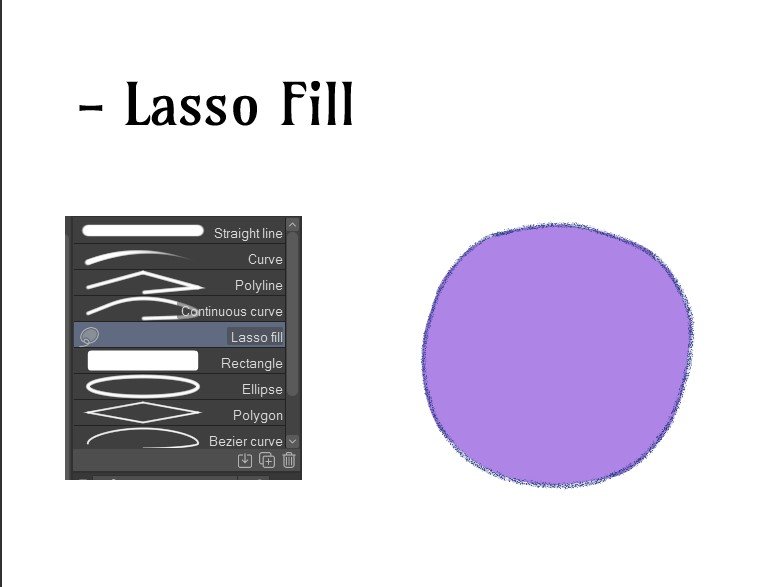
- G-Pen
When it comes to line art, my favorite tool is the G-Pen. This brush is ideal for creating clean, defined lines, especially when I’m working in a manga style. The way it responds to pencil pressure is simply perfect; you can achieve fine or thick lines with ease. I love how it brings my characters to life and adds that dynamic touch I seek. This brush is the best for giving that special flair to shounen-style illustrations.
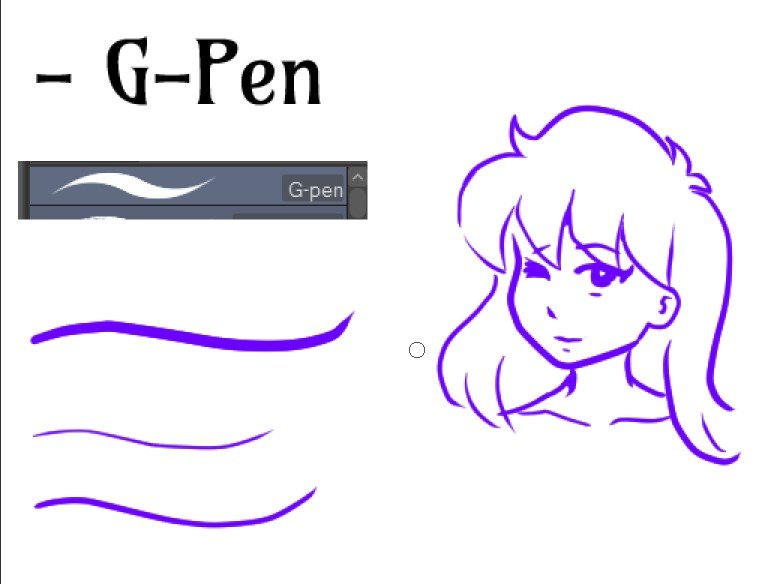
- Pencil
For my illustrations with a retro anime style, nothing beats the Pencil. This brush has a unique texture that resembles hand-drawn sketches, which is exactly what I need to capture that nostalgic essence. When I use this brush, I feel like I’m going back to my artistic roots, and that always inspires me. It has definitely become one of my favorites.
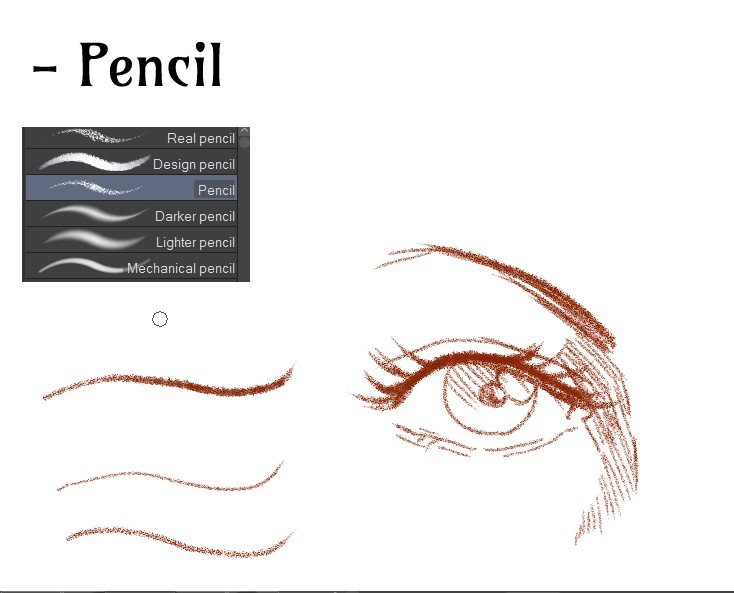
- コミスタっぽい丸ペン (Comista Ppoi Maru Pen)
This tool has a curious name, but its function is even more interesting. It translates to "round brush in the style of Comista." I use it for line art that requires a more delicate and subtle touch. It’s perfect for those fine details in my illustrations where I want to maintain a soft and elegant aesthetic. It’s also very useful when creating illustrations that convey feelings like love or tenderness due to the delicacy of the stroke.

- Dense Watercolor Brush
When it comes to backgrounds, the Dense Watercolor Brush is my best friend. This brush allows me to create beautiful retro anime-style backgrounds with rich and vibrant texture. I love how I can blend colors and create watercolor effects without having to deal with the mess of traditional media. It’s like having the best of both worlds: the freedom of watercolor with the precision of digital. With some practice, you can achieve smooth gradients using the same brush without needing other tools like Blur or Blend.

- 水彩/Watercolor Pencil/Watercolor Pencil (Suisai)
Last but not least is the Watercolor Pencil (水彩). This brush is ideal for illustrations that seek a touch of traditional art. The way it simulates the texture of a watercolor pencil is simply magical. I like to use it to add final details or to give a soft finish to my works. It’s perfect for those moments when I want my art to have a more organic and less digital feel.

Well, my friend, these are some of my favorite tools for digital illustration. Each one has its place in my workflow and helps me express my creativity in unique ways. Whether you are starting in the world of digital art or are a veteran looking for new tools, I hope you find something useful in this list.
Remember, the most important thing is to experiment and find the tools that best suit your personal style. At the end of the day, what truly matters is enjoying the creative process and letting your imagination soar. So grab your coffee, open your favorite program, and start drawing! Don’t be afraid to try the different functions of each brush or tool. You’ll be surprised by what you can achieve with just a few adjustments.
Today, I’m sharing an illustration where Pete, a character from the anime Daiku Maryu Gaiking, trains Ylia in using the launcher. And yes! I used most of the tools I’ve shared in this post to create it.

I hope this article has inspired you to explore new tools and techniques. If you have any questions or need additional information, feel free to let me know. Leave your questions in the comments. They could become the basis for new articles that may help other illustrators and manga/comic creators.
Until the next article!
*Disclaimer: *English is not my native language. Even when I have a conversational level, I can make a lot of mistakes in the structure of the sentences. Feel free to kindly correct me. It will help me in my learning process. Thanks for your understanding. **
My blogs: Noise Steemit Hive Publish0x Medium
My Social Networks Instagram Facebook Twitter YouTube TikTok
My shops: Redbubble
Commissions Open: Fiverr